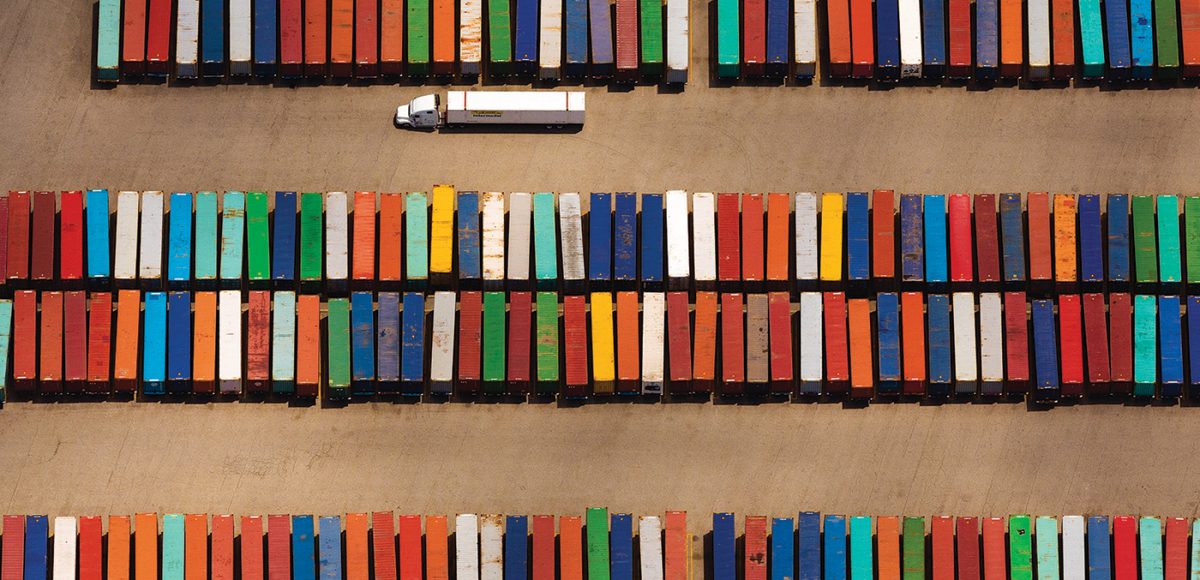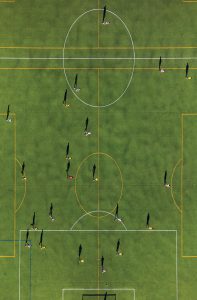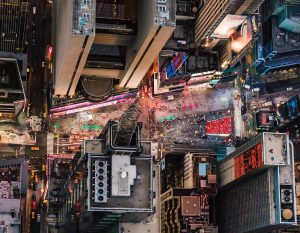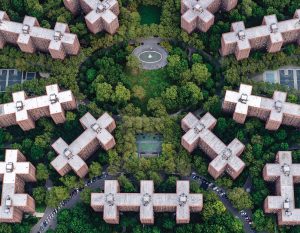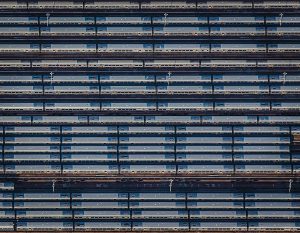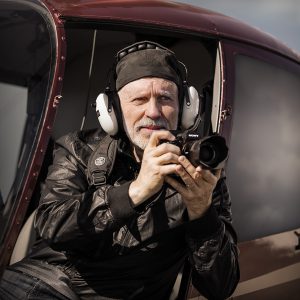Donn Delson grew up in Ohio. His father was an aeronautical engineer, which perhaps explains the son’s fascination with aerial photography. Delson’s drive to travel the world, shooting potent abstracted images, comes from his strong entrepreneurial background. Reflecting on how his life story influences his art-making, Delson said, “The best investment you can make is in yourself. Being an artist is my major form of self-actualization.” Back in his school days, the artist-photographer recalled reading Once and Future King, a historical fiction about King Arthur. “In the book, Merlin turns a boy—the future king—into an eagle, so that the boy could realize the oneness of the earth and all its inhabitants. He wanted the boy-king to see that the fences and borders that exist on the ground disappear completely in the overview. The experience of flying in a helicopter above the world erases those artificial boundaries.”
Delson’s vertiginous aerial photography is music to the eyes. In Xylophone, what seem like tones on percussive plates, whimsically line themselves up for inspection. Emerging from abstraction, the work reveals itself to be keyboard rows of multi-colored storage units trucking across the image, a photo shot from a helicopter 3,000 feet above the earth. Delson’s unique perspective gives him an indelible, omnipotent point of view.
Some of the best photographers are painters or cognoscenti of painting. Delson takes leaps of creative inspiration from Paul Klee and Piet Mondrian. On the Town is a luminous homage to Mondrian’s Broadway Boogie Woogie. Its grid of city streets, chock-a-block with glossy New York taxicabs, was indeed shot while the artist was flying directly above Broadway. It evokes Delson’s highly energetic entrancement with aerials. The artist elaborated on his fascination with modernist painters: “I try to realize a Mondrian-like perspective in my aerial photography. I am creatively liberated when I am up in the air—no doors, no windows—just flying above the world.” Delson looks at abstract images on a flat plane because they have vibrancy, rhythm and a life we don’t usually see. The photographer mused, “Broadway Boogie Woogie speaks to me of big city, energy and urban vitality.”
Delson’s Double Vision is steeped in the work of Ellsworth Kelly, Frank Stella and Ad Reinhardt, who famously quipped: “Art is Art. Everything else is everything else.” Delson knows exactly where the art is and points his helicopter directly at it. In this dreamy photograph, pictorialization dances a pas de deux with a painterly partner to present a reality that is graphic, minimalist and full of movement. Here, the artist creates a meta-reality. Soccer players on a field are depicted not as people but as long dark shadows that act as stand-ins for the players. These shadows become more real than the actual men on the field. Again, the soft musicality in the image offers up a chimerical and sub-textual leitmotif.
Whether of train stations, storage units or shipping containers, the artist’s images convert humanity’s vast and overwhelming excess into totems of manufactured production. While the photographs sing harmoniously, the deliberate, abstracted delaying of the viewer’s understanding of the subject matter provokes a re-engagement with the prevailing themes of modernity.
Delson makes art in a big way. A high-resolution Sony camera, an enormous passion for travel, and state-of-the-art large format photographic printing and finishing, allows him to make meaningful artworks with extraordinary production values. He is also contemplating creating prints on a scale of eight by twelve feet, to be mounted under plexiglass. His highly dramatic aerials are so voluptuously detailed, they seem to transport the viewer, as if taken along for the ride to share the view outside the photographer’s helicopter window.
Building Blocks, shot over Stuyvesant Town on the east side of New York City, is not so much deconstructed as re-ordered in engrossing symmetry. Its architecture is an ode to classic French and Italian Renaissance gardens, like at the Palace of Versailles. These environs, with their fountains, plantings and buildings, were designed to represent unanimity and order, to invoke the ideals of the Renaissance and to recall the virtues of Ancient Rome. In the same classical vein, Delson’s photographs present the world in peace and tranquility. The artist methodizes his realm of the Renaissance, so that all the elements in his compositions are in graceful, congruent agreement. His images evoke balance and a sublime visual concordance. They fly us into the sky to observe the measured and majestic earth below, and to share the wizard Merlin’s magical perspective.
Donn Delson’s photographs will be featured in an exhibit opening at TAG Gallery in March 2017.



